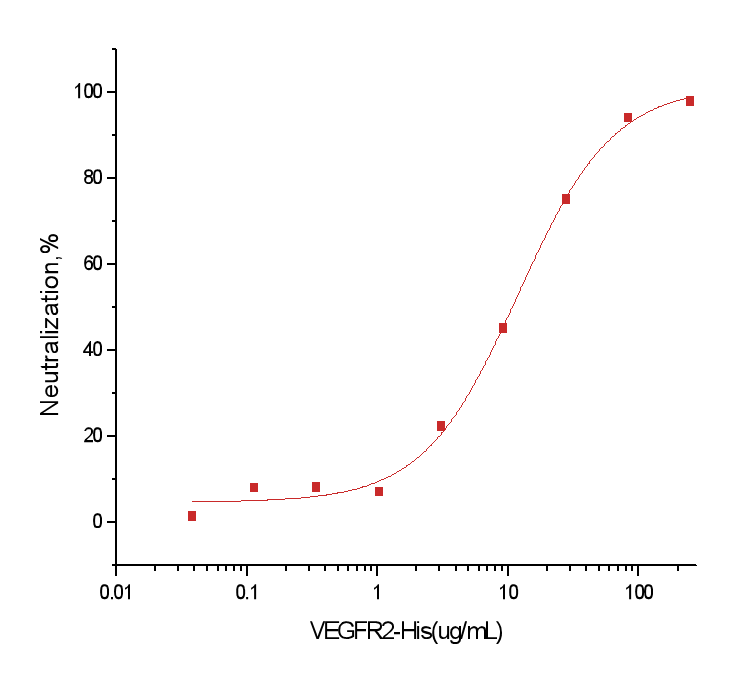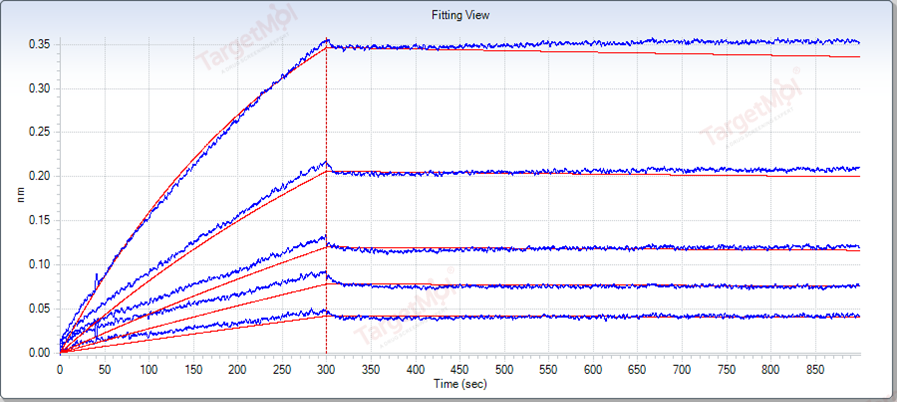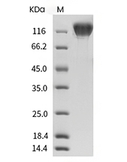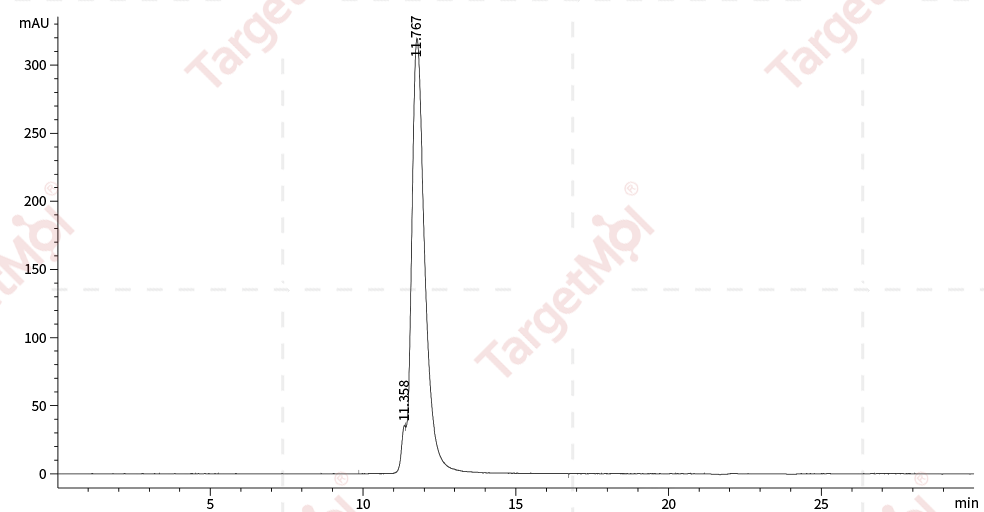Shopping Cart
- Remove All
 Your shopping cart is currently empty
Your shopping cart is currently empty
VEGFR2/KDR Protein, Human, Recombinant (His) is expressed in HEK293 mammalian cells with His tag. The predicted molecular weight is 84.6 kDa and the accession number is P35968-1.

| Pack Size | Price | Availability | Quantity |
|---|---|---|---|
| 100 μg | $259 | In Stock | |
| 200 μg | $459 | 7-10 days | |
| 500 μg | $971 | 7-10 days |
| Biological Activity | 1. Measured by its ability to inhibit the VEGF-dependent proliferation of human umbilical vein endothelial cells (HUVEC). The ED50 for this effect is typically 10-50 μg/mL in the presence of 10 ng/mL recombinant human VEGF165. _x000D_ 2. Using the Octet RED System, the affinity constant (Kd) of VEGFR2/KDR Protein, Human, Recombinant (His Tag) bound to Anti-VEGFR2 Antibody was 1.9 nM.   |
| Description | VEGFR2/KDR Protein, Human, Recombinant (His) is expressed in HEK293 mammalian cells with His tag. The predicted molecular weight is 84.6 kDa and the accession number is P35968-1. |
| Species | Human |
| Expression System | HEK293 Cells |
| Tag | C-His |
| Accession Number | P35968-1 |
| Synonyms | VEGFR2,VEGFR,kinase insert domain receptor,Flk-1,FLK1,CD309 |
| Construction | A DNA sequence encoding the extracellular domain of human VEGFR2 (NP_002244.1) (Met 1-Glu 764) was fused with a polyhistidine tag at the C-terminus. Predicted N terminal: Ala 20 |
| Protein Purity | > 95 % as determined by SDS-PAGE. > 90 % as determined by SEC-HPLC.   |
| Molecular Weight | 84.6 kDa (predicted); 120-130 kDa (reducing condition, due to glycosylation) |
| Endotoxin | < 1.0 EU/μg of the protein as determined by the LAL method. |
| Formulation | Lyophilized from a solution filtered through a 0.22 μm filter, containing PBS, pH 7.4. Typically, a mixture containing 5% to 8% trehalose, mannitol, and 0.01% Tween 80 is incorporated as a protective agent before lyophilization. |
| Reconstitution | A Certificate of Analysis (CoA) containing reconstitution instructions is included with the products. Please refer to the CoA for detailed information. |
| Stability & Storage | It is recommended to store recombinant proteins at -20°C to -80°C for future use. Lyophilized powders can be stably stored for over 12 months, while liquid products can be stored for 6-12 months at -80°C. For reconstituted protein solutions, the solution can be stored at -20°C to -80°C for at least 3 months. Please avoid multiple freeze-thaw cycles and store products in aliquots. |
| Shipping | In general, Lyophilized powders are shipping with blue ice. |
| Research Background | VEGFR2 also called KDR or Flk-1, is identified as the receptor for VEGF and VEGFC and an early marker for endothelial cell progenitors, whose expression is restricted to endothelial cells in vivo. VEGFR2 was shown to be the primary signal transducer for angiogenesis and the development of pathological conditions such as cancer and diabetic retinopathy. It has been shown that VEGFR2 is expressed mainly in the endothelial cells, and the expression is upregulated in the tumor vasculature. Thus the inhibition of VEGFR2 activity and its downstream signaling are important targets for the treatment of diseases involving angiogenesis. VEGFR2 transduces the major signals for angiogenesis via its strong tyrosine kinase activity. However, unlike other representative tyrosine kinase receptors, VEGFR2 does not use the Ras pathway as major downstream signaling but rather uses the phospholipase C-protein kinase C pathway to signal mitogen-activated protein (MAP)-kinase activation and DNA synthesis. VEGFR2 is a direct and major signal transducer for pathological angiogenesis, including cancer and diabetic retinopathy, in cooperation with many other signaling partners; thus, VEGFR2 and its downstream signaling appear to be critical targets for the suppression of these diseases. VEGF and VEGFR2-mediated survival signaling are critical to endothelial cell survival, maintenance of the vasculature and alveolar structure, and regeneration of lung tissue. Reduced VEGF and VEGFR2 expression in emphysematous lungs has been linked to increased endothelial cell death and vascular regression.Cancer ImmunotherapyImmune CheckpointImmunotherapyTargeted Therapy |

Copyright © 2015-2025 TargetMol Chemicals Inc. All Rights Reserved.